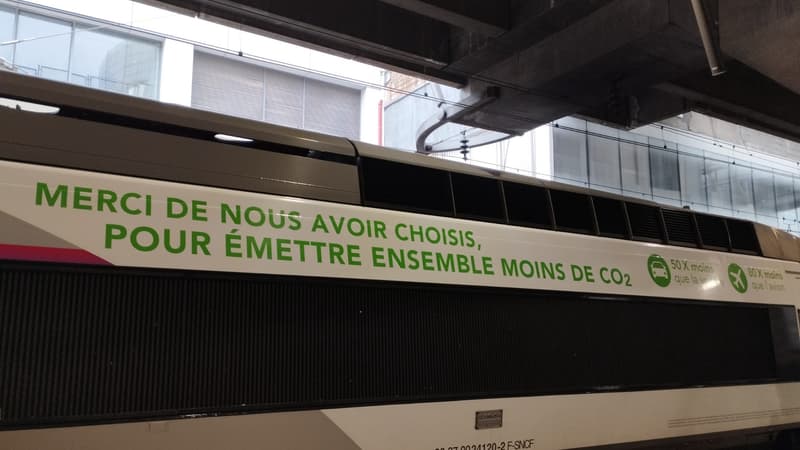That the (electric) train emits much less CO2 than the plane is a certainty. But deviations must be checked when they appear in an ad.
This is the opinion of the Advertising Ethics Jury (JDP) seized by the FNAM (National Federation of Aviation and its Trades) on several SNCF advertisements where it could be read: “traveling by train at high speed 50 times less CO2 is emitted than for a trip by car and 80 times less than by plane”.
It should be remembered that the JDP’s mission is to rule on complaints made against advertising, in regard to professional standards.
The aviation lobby disputes
In its complaint, the aeronautical lobby considered that “the general figures that are the subject of this statement are not corroborated by the SNCF’s own calculator.”
And affirm: “The figures that appear in the SNCF announcements do not reflect the reality of the respective performances of the train and the plane in terms of CO2 emissions.”
The SNCF considers, on the contrary, that the mention “80 times less than the plane” corresponds to a mathematical truth that remains relevant: it is the result of the calculation made based on the figures published by the ADEME on May 2020. day, the the figures are the same and the result of the calculation does not change”.
If the JDP does not rule on the result of this calculation, it considers that the advertisements “disobey points 2 and 4 of the ‘sustainable development’ Recommendation of the Professional Advertising Regulatory Authority (ARPP), namely: “do not induce to mislead the public about the reality of the advertiser’s actions or about the properties of its products in terms of sustainable development and to formulate a clear message, indicating “how its activities or products present the claimed qualities”.
Lack of precision “at the very least”
Indeed, the Jury points out that the claim “80 times less” “does not take into account the impact of the construction and maintenance of infrastructures and, therefore, hides part of the carbon footprint attributable to the use of means of passenger transport” .
He believes that online advertising “does not indicate that the figure of 80 times less corresponds to an average figure”, so it presents strong variations depending on the links observed.
In conclusion, the Jury urges the SNCF to “specify, as a minimum, that the proportion of ’80 times less’ must be understood only as an average, over all long-distance trips in France, the Jury, which also points out that the sources and the calculation methods used to arrive at the supposed figure appear in very small characters, which are difficult to read, it is of the opinion that the two announcements ignore (several) points of the “Sustainable Development” Recommendation of the ARPP”.
Details that the SNCF says it is willing to put in its advertisements and media.
Last August, in an announcement, Eurostar – known for her caustic campaigns – mocked the air sector promises: “Of course the airlines are green” we could read before seeing below “(out of jealousy)”.
And explain that on the Paris-London link, a plane trip emits as much carbon as 14 Eurostar trips.
This humor was very little appreciated by the aerial actors. During a round table discussion during the Paris Air Forum, Alain Battisti, president of the National Federation of Merchant Aviation, wondered if it was “stupidity or provocation,” according to comments reported by Tour Mag.
Source: BFM TV


